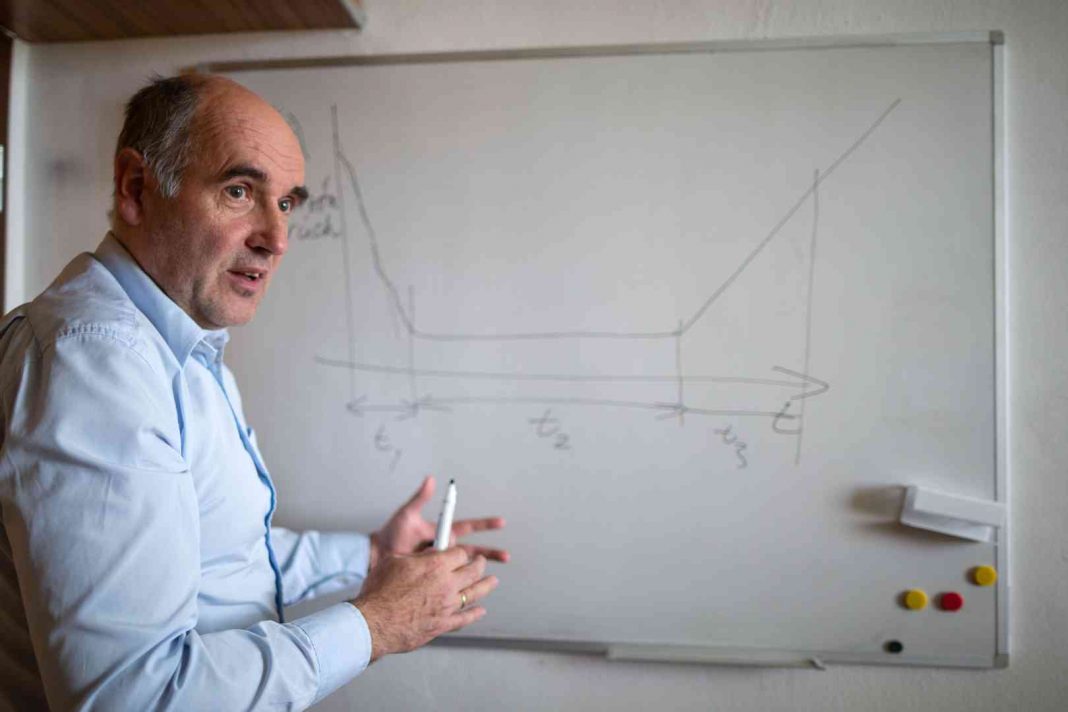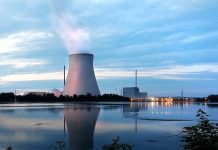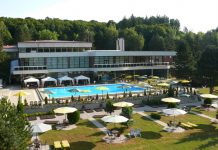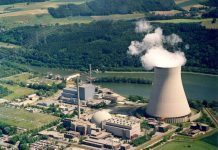Vladimír Slugeň is a professor at the Slovak University of Technology who has studied nuclear power for over thirty years. He remembers the times when managers from Enel, the Italian firm that privatised the Slovak electricity generator, were deciding whether to complete the Mochovce nuclear power plant. This is a translation of an article published originally in Slovak by Denník N.
Do you consider the power plant that is under construction at Mochovce to be safe?
Yes. This type of power plant has proved itself to be safe and reliable over many years. There are 19 plants of this type in the world and they are now at various stages in their operational lives. The only one to have been permanently shut down is Greifenswald in Germany. When you count up, there are nearly a thousand reactor-years of operating experience. Now the Austrians are saying that the system has more holes than a Swiss cheese and that the reactor shield (containment) is going to fall down. But it won’t fall. They are talking nonsense. This hasn’t happened to any reactor type in the world. The walls of the hermetic zone around the reactor are a metre and half of solid reinforced concrete, which has been seismically hardened to withstand a major earthquake.
The Austrians have long questioned the strength of the containment of the units under construction at Mochovce because of the holes drilled in the hermetic zone around the reactor.
I will tell you what that drilling work was for. International standards are getting stricter all the time so the UJD (the Nuclear Regulatory Authority of the Slovak Republic) asked for the power plant to be able to withstand a beyond-design-basis earthquake.
Vladimír Slugeň
(1962)He studied nuclear power at the Faculty of Electrical Engineering of the Slovak University of Technology. Earned CSc. (1993) and DrSc. (2010) degrees for research on the construction of nuclear installations. Professor of nuclear power since 2005. Internships at the Jaslovské Bohunice Nuclear Power Plant, Siemens-KWU in Germany and elsewhere. Prof. Slugeň is a president of the Slovak Nuclear Society since 2004 and he had served as a president of the European Nuclear Society from 2009 to 2011.
How the drilling activity happened at Mochovce
Was it done in response to Fukushima?
The decision was made even earlier, in 2008. Seismic reinforcement required the installation of several iron plates in the hermetically-sealed zone to ensure the stability of the components.
That’s why they drilled into the containment structure protecting the hermetic zone?
A steam generator weighs up to 100 tonnes and it is 12 metres long. Anchoring points were added so that when an earthquake happens, the steam generators, pumps and valves would not start moving around.
The whole hermetic zone starts moving?
Of course. That is what the power plant is designed to do. It includes components with different responses and accelerations. The seismic resistance of a power plant is increased by installing anchoring elements, plates, props and other elements to which the machinery is fixed.
They do that by drilling into the containment?
Exactly. That is what those holes are for. The plates are fixed to the wall according to exact plans. It is the normal way to do these things.
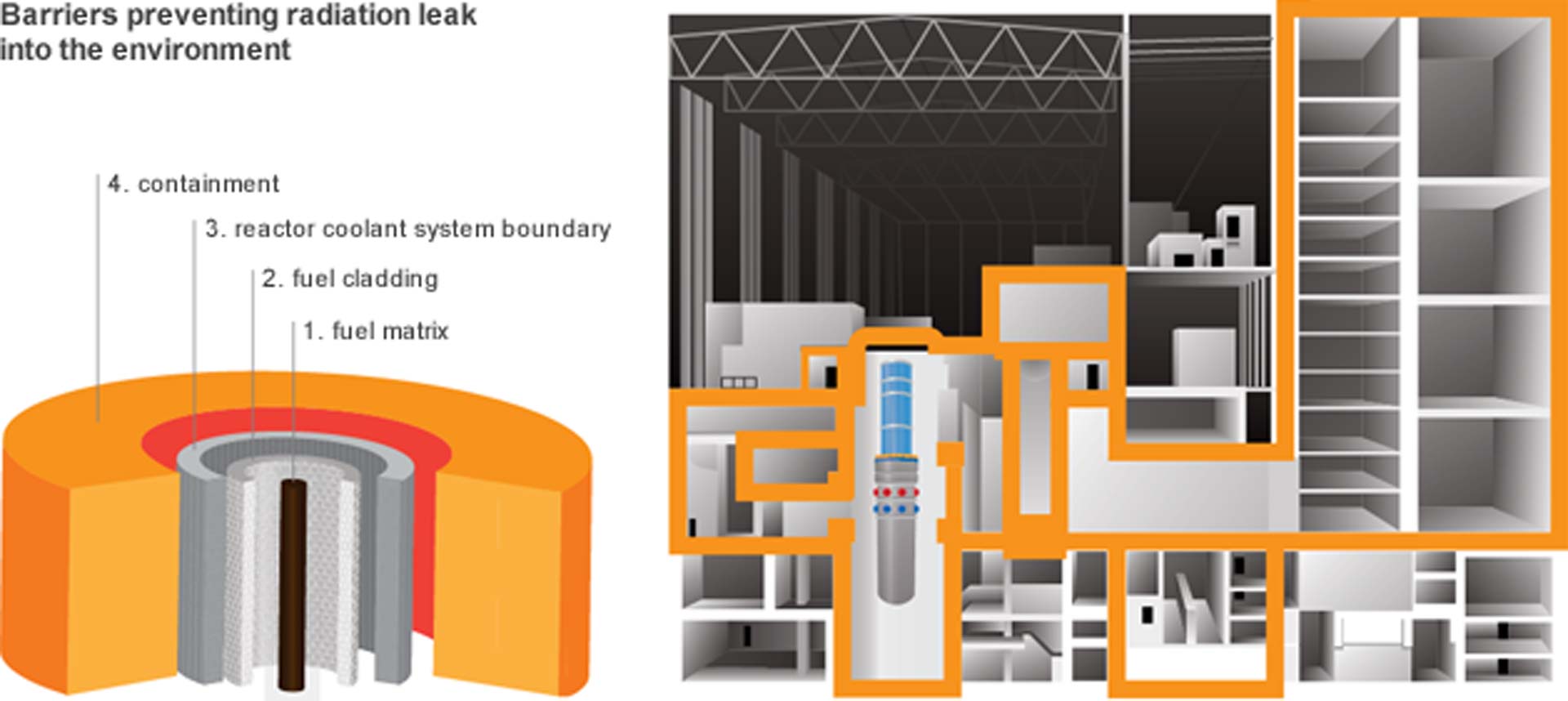
Doesn’t it weaken the containment?
On the contrary, it helps the containment to withstand shocks. We are talking about walls that are 1.6 metres thick. A reinforcement plate has an anchor about half a metre long and it is embedded in the pre-stressed concrete of the containment. There is still another metre of reinforced concrete. The reinforcement prevents the building from moving at all. That is not the main place the Austrians have got confused though.
Where is that?
The original design called for the building to withstand an earthquake of a certain strength. Then the newer, stricter rules came in. They made it so that the power plant would withstand an earthquake that has never happened in this area and that can be expected once in a hundred thousand years. It has been over-dimensioned to cope with double the original load (0.15 g compared to 0.06 g).
How strong was the earthquake in the Fukushima accident?
On a scale from 1 to 10 it had a magnitude of 9.0 on the Richter scale. The containment buildings survived that strong earthquake. Things got out of control when the tsunami struck. A VVER-440 reactor of the same type as we have in Mochovce survived a 6.9 magnitude earthquake in Armenia.
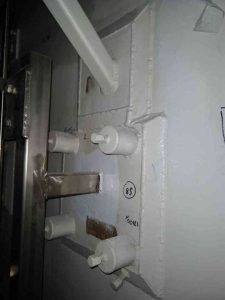
What went wrong at Fukushima?
The Japanese shut down the reactor, coped with the earthquake and started to cool the units, but when the colossal wave struck, they lost all their diesel generators and the electricity supply to their pumps. After a few hours they could no longer remove heat and so the reactor overheated and melted down. Hydrogen was released in the meltdown and escaped into the auxiliary buildings, where it exploded. There was no nuclear explosion. The incident didn’t even release any radiation that could endanger the health of the population in the surrounding area. That’s not my own opinion but the outcome of intensive research by the World Health Organisation.
What magnitude of earthquake can Mochovce Units 3 and 4 withstand after implementing the new standards?
The power plants are designed for a certain level of horizontal acceleration. That is a measurable physical quantity. The Richter scale, or more properly the local magnitude scale, is based on effects rather than the size of the horizontal acceleration. Mochovce has been built to cope with the strongest earthquake that can occur in its area. The new standards mainly provide better parameters for seismic resistance and there is no question of Mochovce being full of holes.
The Austrian argument can be understood as being less concerned with the drilling per se than with the poor quality of the work, which could have damaged the long-term strength of the reinforced concrete containment.
I’m amazed they would claim such a thing. Have those Austrians been there?
They say their information comes from an anonymous source at the construction site. Furthermore, Mario Zadra, an engineer who has been there, raised concerns about the safety of the units at a press conference of the Progressive Slovakia party.
Yes, and then they talked about problems that had already been solved a long time before that. What that man said often made no sense, and he is obviously the only one making such claims. Talk to the experts.
From outside, it looks like a lot of things had to be repaired or redone. The nuclear regulatory authority, the ÚJD, also criticised management at the site. Doesn’t this suggest that there’s a higher level of risk?
I sometimes criticise it because I want the power plant to be built quickly and safely. While it is unfinished, Slovenské elektrárne doesn’t pay any dividends and that has indirect impacts on all tax payers because the state owns a 34% share in SE. I don’t want to get into a debate on those issues because I can’t judge the extent of them or say whose fault they are.
How the construction of the nuclear power plant is monitored
Who is present in the hermetic zone of the power plant when the anchoring work is done?
The contractor. There are thousands of holes drilled and they have to be approved in advance. Approval is needed for their location and how they are drilled and the ÚJD conducts checks. They receive permission after they satisfy all the set criteria.
The supplier drills the holes and then a team comes from the ÚJD to inspect them?
You must ask the ÚJD about the details. There is continuous monitoring of the work on site. I know that the ÚJD has around fifty local inspectors at Mochovce. When major events are taking place, they are there from morning until evening and if they are not there, they record the work using a stationary camera. This doesn’t mean that all 50 local inspectors check drill holes. Each of them has their own specialisation and not all of them are necessarily experts on drilling.
Given the number of people at the ÚJD’s disposal, can they check all the drilled holes?
They do various destructive tests and stress tests and they make detailed checks of randomly selected drill holes, and they take further steps depending on the results. Most of the ÚJD’s inspectors live in the local area. Do you think they would want to put their own grandchildren at risk?
If they are not there in person, they still have cameras.
Not everywhere, but where they are needed.
I suppose they need them in the hermetic zone.
How the ÚJD’s local inspectors do their job is not my business but all work has to be properly taken over and tested with a signed protocol. As far as I know, they conduct videoscope inspections of the drill holes and other tests.
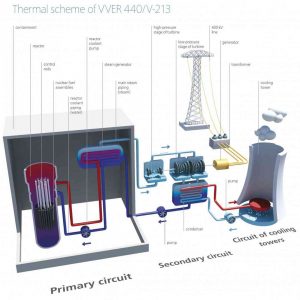
What is a videoscope inspection?
The inspector uses a small camera to look into the drill hole and decide if it has been drilled correctly. A number of ex-post inspections are also carried out where plates are chosen at random and their maximum load is tested; destructive tests are also carried out and the correctness of work is checked. There is a complex inspection process.
Is it possible for ex-ante checks or a camera to determine, looking ahead, whether a drill hole has not damaged the reinforced concrete?
An ex-post check will determine whether the correct procedure was followed. All the projects respect the reinforcing pattern. If the drill hits a steel bar, a solution such as patching is needed.
What if a worker strikes a steel bar and does not report it? Will it be detected before the reactor starts up?
The whole hermetic zone is tested. It is comprehensively tested for strength and integrity. The pressure throughout the hermetic zone is raised to 150 kPa, which is just a little less than the pressure in a car tyre and inspectors measure the decrease in pressure and the deflection of selected walls and ceilings on the edge of the hermetic zone.
What were the test results?
In 24 hours the pressure fell by just 1.06 percent. This is an excellent result. In the initial testing of the V1 power plant (the units at Jaslovské Bohunice that operated from 1978-1980 to 2006-2008), they recorded a 20 percent decrease.
What would happen if a plane crashed into Mochovce
The Austrian criticism can also be understood as a concern about how interference with the structure today will affect it in 20 or 30 years. The plant is expected to be in operation for 60 years.
The main specialist for the Austrian activists from GLOBAL 2000 is a Mr Reinhard Uhrig. He has no entries in the SCOPUS database, which means that he practically doesn’t exist as a scientist, and we are supposed to be interested in his feelings and pseudo-expert statements. By the way, Mr Uhrig has a degree from University College Londýn in the field of literary theory.
But we are talking about a nuclear power plant.
Exactly. We need to talk on an expert level with professionals, not amateurs. By the way, next door to the airport at Schwechat there is a refinery. If there was a plane crash there, the Danube would turn black all the way to the Black Sea and the fire would be visible from Spain. Nobody talks about that, but they do talk about a strong and tested building. There are any number of similar cases.
But wouldn’t you agree that radiation is the larger problem?
Not at all. Look at the accidents in refineries and chemical plants around the world. The effects were much worse than in the nuclear industry. What happens if a plane crashes into a nuclear power plant? The reactor shuts down; it is protected by a 1.6 metre thick wall of pre-stressed concrete and is also seismically reinforced. The probability of hitting the reactor directly is practically zero and even if it happened, some slightly radioactive water would leak out and be caught in drainage channels that would take it to be filtered.
Is it safe?
The reactor shuts down; maybe a little water leaks out (the probability is ten to the power of minus five) and gets replaced. What’s more, the water in the primary circuit is about as contaminated as the radon springs at Janské Lázně. Tourists drink that. The only difference is that this doesn’t have any minerals.
One of the arguments that comes up a lot with reference to Mochovce is that it could withstand a hit from a small plane but not a large one. The Austrians have mentioned this.
In my view, Mochovce could also cope with a large plane crashing. The complex has defences including pylons and nets. These cannot stop a direct hit from a plane but they will cause it to break up.
What do you mean by breaking it up?
They will smash it into several parts. Then there is some space and then the containment, which has other protective elements. The heaviest part of a plane is the motor. That also has the highest momentum. It is true that the current studies are based on the impact of a small plane. What would actually happen if a big plane crashed? Would it damage the outer wall, the containment? That can be repaired. I don’t think terrorists are stupid enough to throw their lives away on something that has such a small chance of success. We also have a defensive system against such attacks.
What can you do in such a case besides using the armed forces?
You can shut down the reactor when you see an aircraft coming towards it. In a few seconds you can reduce the output from 100 percent to 5 percent, so the chain reaction ends in a few dozen seconds.
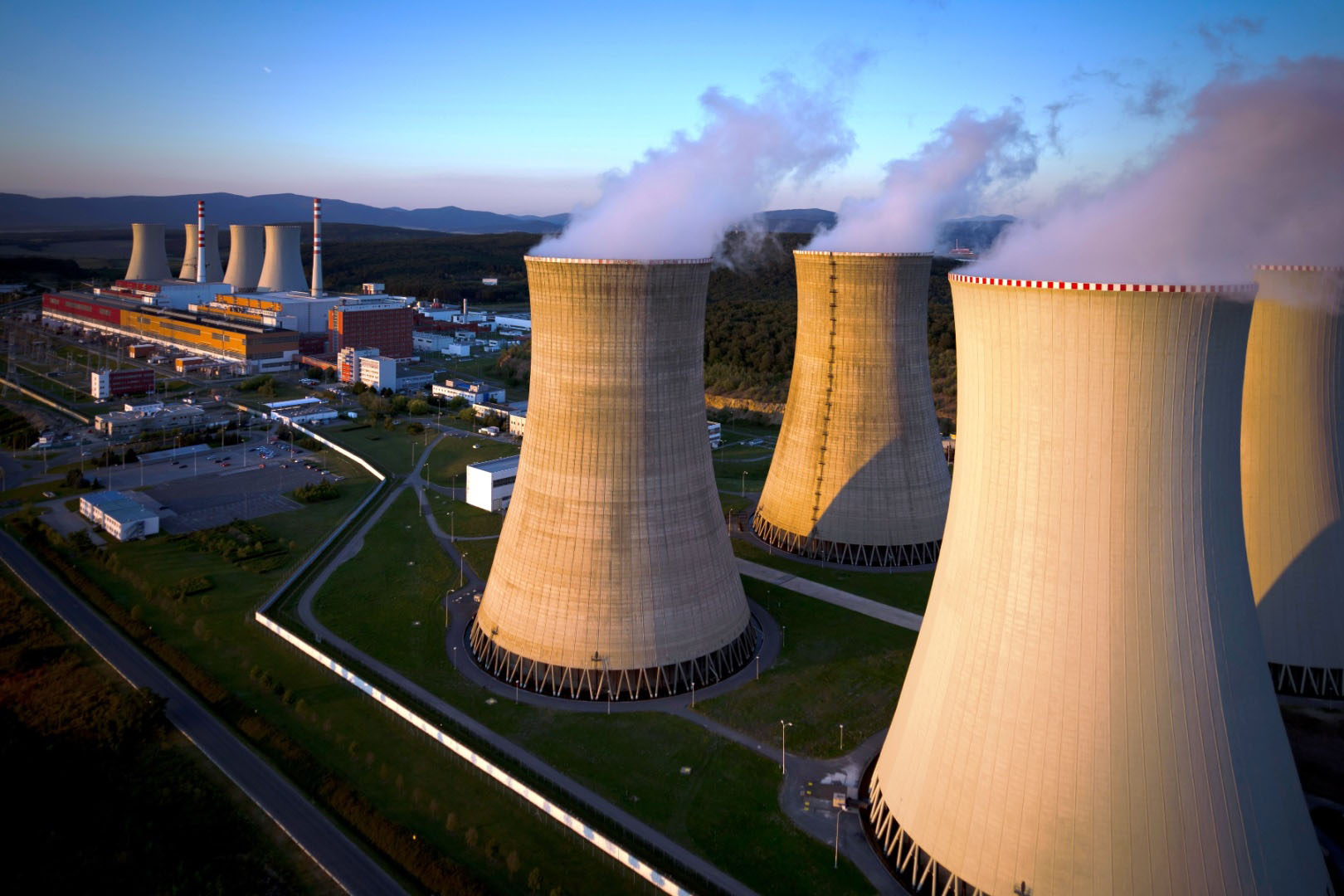
Why there probably won’t be another reactor at Mochovce
The Austrians asked the ÚJD whether the River Hron has enough water to cool the new units.
That is a good question. When they were thinking about the nuclear plant that would follow Mochovce, the ÚJD recommended that a fifth block ought not to be built at the Mochovce site. The reason was service water.
There isn’t enough water there?
There would be enough water for the routine operation of a fifth unit a Mochovce. Water availability has to consider the possibility of a once-in-a-century drought at the same time as the need for emergency water supplies. This means considering what happens if there is a week in August when there is a once-in-a-century drought and you also need extra water for an emergency. For example, if you need back-up cooling supplies. It was calculated that there was enough water in the area for four units. There wouldn’t be enough for a fifth unit, especially if it was bigger than the others. It could be supplied, but you would have to build large reservoirs that would take years to fill.
If cooling is the most sensitive function, what about a plane striking the cooling towers?
I don’t want to provide a complete guide explaining all the power plant’s safety systems. Mochovce complies with all international standards and requirements. The cooling towers would not be an interesting target in any case. A strike on the cooling towers would not put at risk the main equipment. The point is that there would be no permanent loss of core cooling capability. Mochovce has several backup cooling systems. We have a shower system, then there are the high and low head safety injection systems and also hydraulic accumulators that ensure that water flows under gravity into the core. It would require many coincidences for everything to fail at once. It is an advantage that two units are being built together. They are connected to each other so if one loses its electricity or water supply, it can draw on the other unit.
Things didn’t work like that at Fukushima?
The water flooded everything there at once, all the substations were short-circuited and there was nowhere even to plug in a mobile generator.
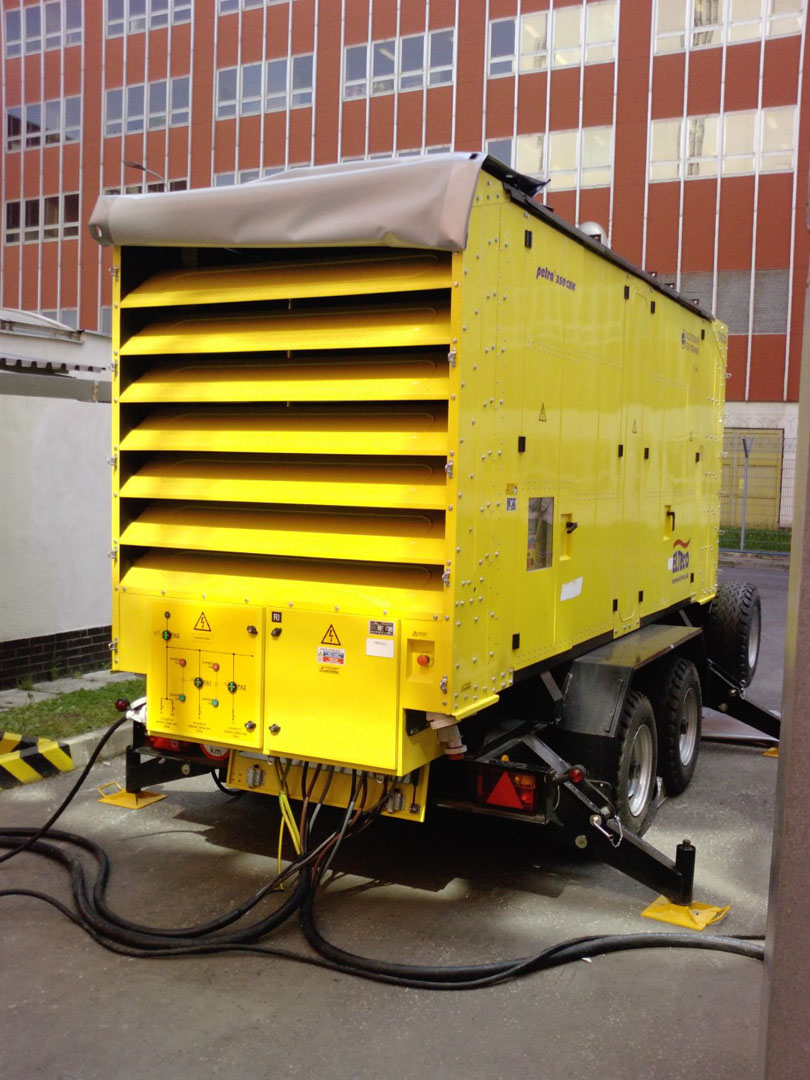
How is the power supply to Mochovce backed up?
There are multiple back-up systems. There are regular pylons connected to the public network, then there are reserve power supplies, then batteries and then there are diesel generators that must be able to output a 10 MW supply within 40 seconds. There are also mobile diesel generators. Can all of these fail at once? We are not expecting tsunamis at Mochovce.
At Progressive Slovakia’s press conference, they raised concerns about the diesel generators. Allegedly their thirty-year expected life has already expired.
Nobody at a nuclear power plant would dare to operate diesel generators that were not fully functional and reliable. The diesel generators also had to pass strict tests supervised by the ÚJD. The renovation, refurbishment or replacement of diesel generators is not a technical problem. You can be sure that the ÚJD would not give permission for operation if there were any problems with the diesel generators.
All the new power plants are built with a completely different type of containment to Mochovce’s. They have a large oval cover called a secondary containment above the power plant. They are supposed to provide additional protection against plane strikes.
This is connected with the accident at Three Mile Island on 28/03/1979. This type of containment was installed there, but not to protect against external threats.
What went wrong there?
The condensate pumps failed and then a valve on the pressurizer got stuck. The fuel in the reactor overheated and its oxidation produced hydrogen. There were two hydrogen explosions in the second unit, but the building withstood them. The large cylindrical containment handled the explosion well in this case. Even so, it was a serious accident because the fuel melted down. The accident is rated level 5 on the International Nuclear Events Scale (INES) compared to level 7 for the Chernobyl tragedy. The lesson drawn from the incident was that it would be good if all power plants had this type of containment. This accident still did not have an impact on public health.

So why do you claim that the Mochovce plant is safe?
Mochovce uses a different protective system, a vacuum building with a bubbler-condenser system that reduces the pressure in the hermetic zone and prevents radiation leaks. The protective system at Mochovce is simply based on a different philosophy. The plant has a low output and large safety reserves.
This brings us back to the activists’ scepticism whether this apparently smaller protective system will provide adequate protection against external threats such as a strike by a large plane.
At Mochovce the reactor is housed in a concrete shaft. The steel tank of the 212-tonne reactor is 15 cm thick. The reactor, the steam generator and the reactor coolant pump are in hermetic boxes. It is nearly impossible to do serious damage to all of this. Finally the bubbler-condenser system protects against radiation leaks.
If things work so well, how come we have had two serious accidents at Jaslovské Bohunice? In one case, two people died and in the second, the fuel was seriously damaged and radioactive material was released within the power plant.
Why can’t the accidents from A1 (the power plant unit at Bohunice shut down since 1977) happen at V2 (the working unit at Bohunice) or at Mochovce? Because they are completely different types of power plant. The equipment of the prototype A1 power plant at Bohunice allowed the fuel to be changed during operation. The accidents that you mention occurred while the reactor was being refuelled when it was in operation and were related to the refuelling. The plants that are now in operation or under construction do not permit such procedures. You have to shut down the reactor and replace the fuel rods safely.
On whether the Finns are building a better power plant than ours
How does Mochovce compare to other types of power plant? For example, the Finns are building a more modern plant at Olkiluoto while Mochovce’s original plans were designed in the last century.
EPR units like at Olkiluoto are able to generate much more electricity with the same number of people. The output of the reactor is up to 1750 MWe. This means that it is more economical, but not in my view much safer. Our reactor is relatively small, because it had to be transported by lorry. It is not possible to get to Bohunice by boat. Another problem with new power plant designs like EPR is that they still have to get over their teething troubles.
Teething troubles?
It’s like when you build a new car design in Formula 1. For the first year, the racer will always be falling out of races because something comes loose or parameters are found to have been set incorrectly. It takes a while to test the design, balance everything and find the right settings.
The Finns have been too innovative?
I wouldn’t say that. The models are reliable but whenever you have a new model, there will be more problems at the start and this also occurs at the start of operations.
Every nuclear power plant has problems at the start that people don’t talk about?
Not every plant. That is why they do a lot of tests before starting live operation. There are cold and hot hydraulic tests, physical tests and then a power escalation test. The power plant must be shown to work at its rated output without problems for 144 hours. It is only then possible to sign the protocol allowing it to start up for electricity generation.
Can you give an example of the sort of errors that can occur?
For example, visual inspection cannot always verify whether a pump is well mounted. It will only become clear when it is put under high pressure. The techniques used include noise diagnostics and measurement of vibration. The system is tuned to achieve optimal operating conditions.
The useful life of a nuclear plant is estimated to be 60 years. Are these tests enough?
Those 60 years should be a period with a low breakdown rate. Take a washing machine as an example. If you have to switch it on three times, you say that it has worn out your patience and you replace it or send it for a general overhaul. Then a new lifetime curve begins. This process is called life extension. In recent decades there have been many improvements in the methods for diagnostics, maintenance and overall operation. All components are tested regularly and all worn out components are replaced. The nuclear industry prioritises safety over operations.
The construction of Mochovce began in the last century. Since then work has started on modern plants around the world.
The Russians are building the VVER-1000 MIR design; in 2018, China started operation of the first EPR unit designed by AREVA/Siemens and two new AP1000 designed by the US firm Westinghouse. Several of them are more economical but the V-213 model of the VVER-440 design is more robust and is proven by years of operation. This is why I think Mochovce is safe enough, and that is what I told the Italian managers ten years ago.
At the beginning the Italians considered changing the design?
No, they were talking about whether to complete the plant or not. I explained to them that in terms of resistance to accidents, this robust older model equipped with the latest technology would be the best that there could possibly be. It is a design that has been proven to work in practice, both in the previous VVER-440 models and the V-213 type in operation in Finland, Czechia, Hungary and Russia. For example, it has six primary coolant loops removing heat from the reactor core. Nowadays that is considered uneconomical. They build units with just four or two loops. Mochovce is over-dimensioned in several ways. It is as if you took a well-made, robust older model of a Mercedes and put into it all the latest technology: new controls, airbags, brakes and so on.
Did the Italians come to you when they were deciding what to do with Mochovce?
They made their own decision and consulted a lot of people. There was a “nuclear renaissance” back then and the Italians were serious considering restarting their own nuclear programme. Don’t forget that in the past they built four nuclear plants that they are now decommissioning.
They wanted to learn from us?
One of the reasons was that they had nearly lost the knowledge acquired in building those four nuclear power plants and they wanted to refresh it.
Whether Mochovce will have an international inspection before starting up
At the end of the construction process, approval will depend only on the ÚJD?
Yes, the decision is made by the ÚJD.
People from the International Atomic Energy Agency won’t come?
They have been invited, but the planning for such a visit takes some time. There will certainly be top experts in the WANO mission that will make a thorough in-depth inspection of the power plant. It will do approximately the same things as an IAEA mission. As far as I know, a large inspection of all four units is expected in 2021.
The new units should be fully operational by then.
States have a sovereign right to decide on the operation of nuclear power plants.
If Slovak inspectors fail to notice something simply because they never had the chance to notice it, will it eventually come to light?
That is a hypothetical question. The checks are thorough. I can’t guarantee that the inspectors are able to detect everything but there are regulations stating what they have to test. The ÚJD has immense powers to impose fines or withdraw the licence and shut down a power plant. There are still many tests that will be done before live operations start – tests of the hermetic zone, hydraulic tests and so on.
What are hydraulic tests?
They are tests of the pipes. They check whether all the welds on pipes meet quality requirements and are watertight. The pressure in the whole pipe system is raised to 200 atmospheres. First with cold water and then with hot.
Since the project was begun in the last century, how long has the reactor been on the construction site?
The pressure vessel was brought out of storage in September 2008. If a reactor pressure vessel is stored correctly, the steel will last at least a century though. Building work for Unit 3 was 40% complete at that time, but all the equipment was installed after 2008 when Enel from Italy took over the project.


